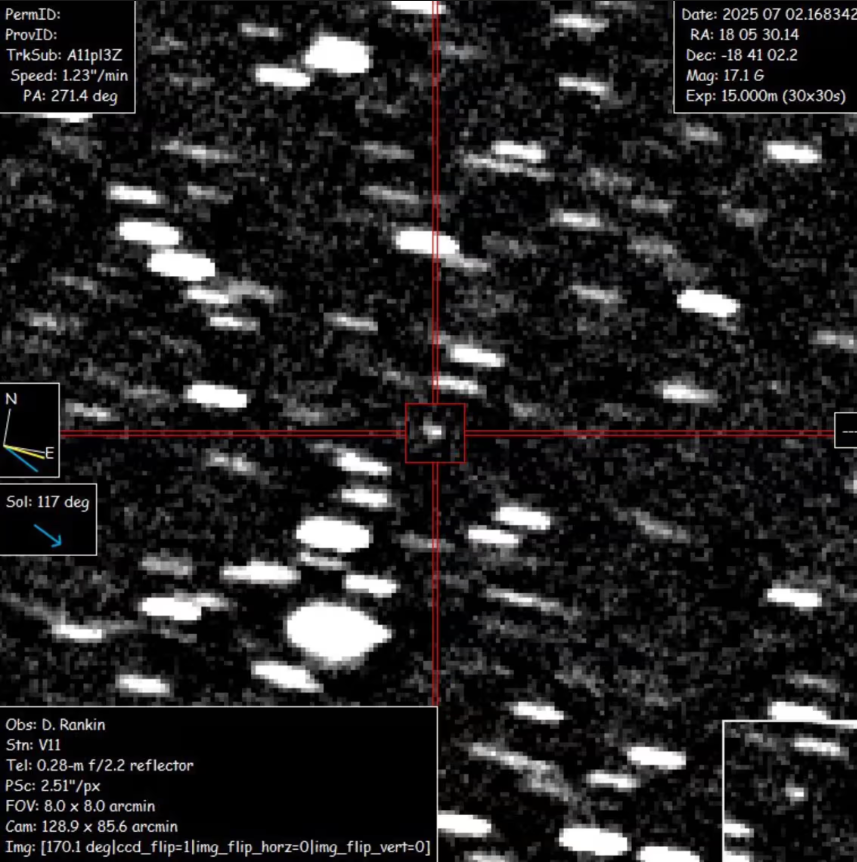Mysterious object discovered! Moving at 60 km per second

First detected on Tuesday by the Asteroid Terrestrial-impact Last Alert System (Atlas) telescope in Chile, the object, initially named A11pl3Z, was later renamed 3I/Atlas. NASA said observations were pushed back to June 14 after data from the various telescopes were examined, and the object's path was being calculated.
IT IS MOVING AT A SPEED OF 60 KILOMETERS PER SECONDThe object, currently about 416 million miles from the sun and coming from the constellation Sagittarius, is moving at a speed of 60 kilometers per second relative to the sun. It follows a highly eccentric and hyperbolic orbit, suggesting that it could be an interstellar visitor.
Dr. Mark Norris from the University of Central Lancashire said that this could be the third interstellar object discovered outside our solar system, strengthening the evidence that such interstellar travelers are quite common in our galaxy.
The Minor Planet Center announced that there was initially no clear information about the nature of the object, but it showed slight cometary activity, a small coma and a short tail were detected. For this reason, the object was also given the name C/2025 N1.
IT WILL REACH ITS CLOSEST POSITION TO THE SUN ON OCTOBER 30Although some experts say the object could be 20 kilometers in diameter, NASA announced that this object does not pose any threat to Earth and will remain at least 1.6 astronomical units (about 150 million miles) away.
NASA announced that the object will reach its closest position to the sun around October 30 and will pass close to the orbit of Mars. Then, it is stated that this comet will leave our solar system and return to the cosmos.
Dr. Norris said the object is expected to increase in brightness as it approaches the sun and could be easily observed by amateur astronomers, especially if it is confirmed to be a comet. Jake Foster of the Royal Observatory Greenwich said the object is not expected to be visible to the naked eye, but could be observed with amateur telescopes in late 2025 and early 2026.
SÖZCÜ





